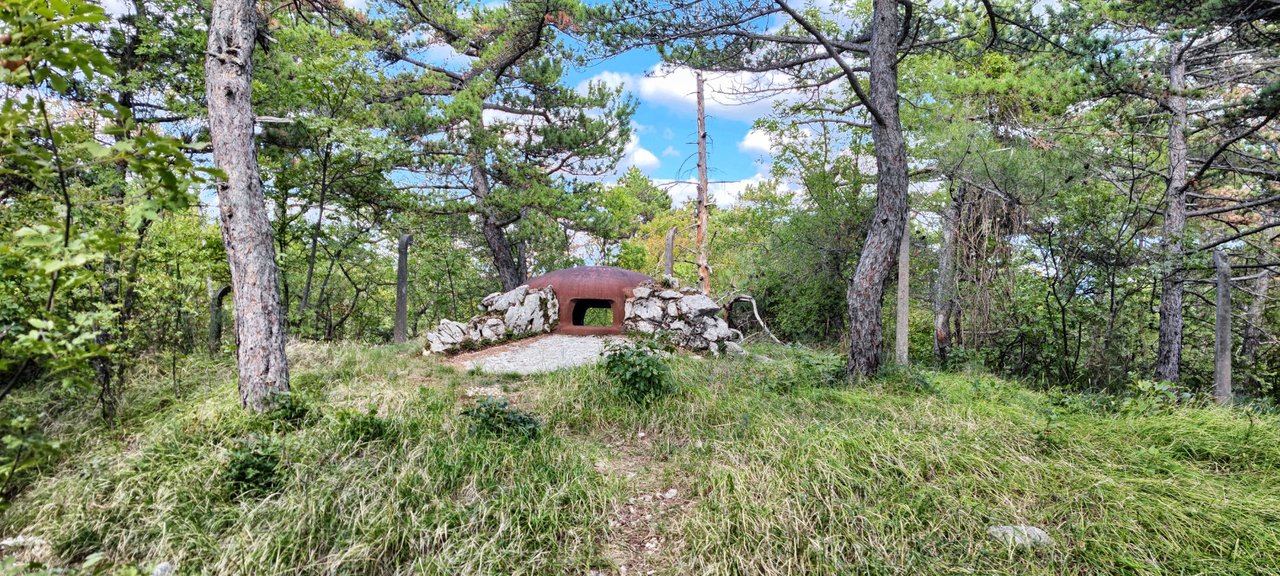From fabulous cave of Postojna to the heart-shaped island Istria we got. And now we're hig over Rijeka, a nice town we will visit later. This here is old and it was four eyes ony for years and years. The fortress Katarina B, one of the best kept secrets on the shores of the adriatic sea. Follow us diving deep in earth and history.
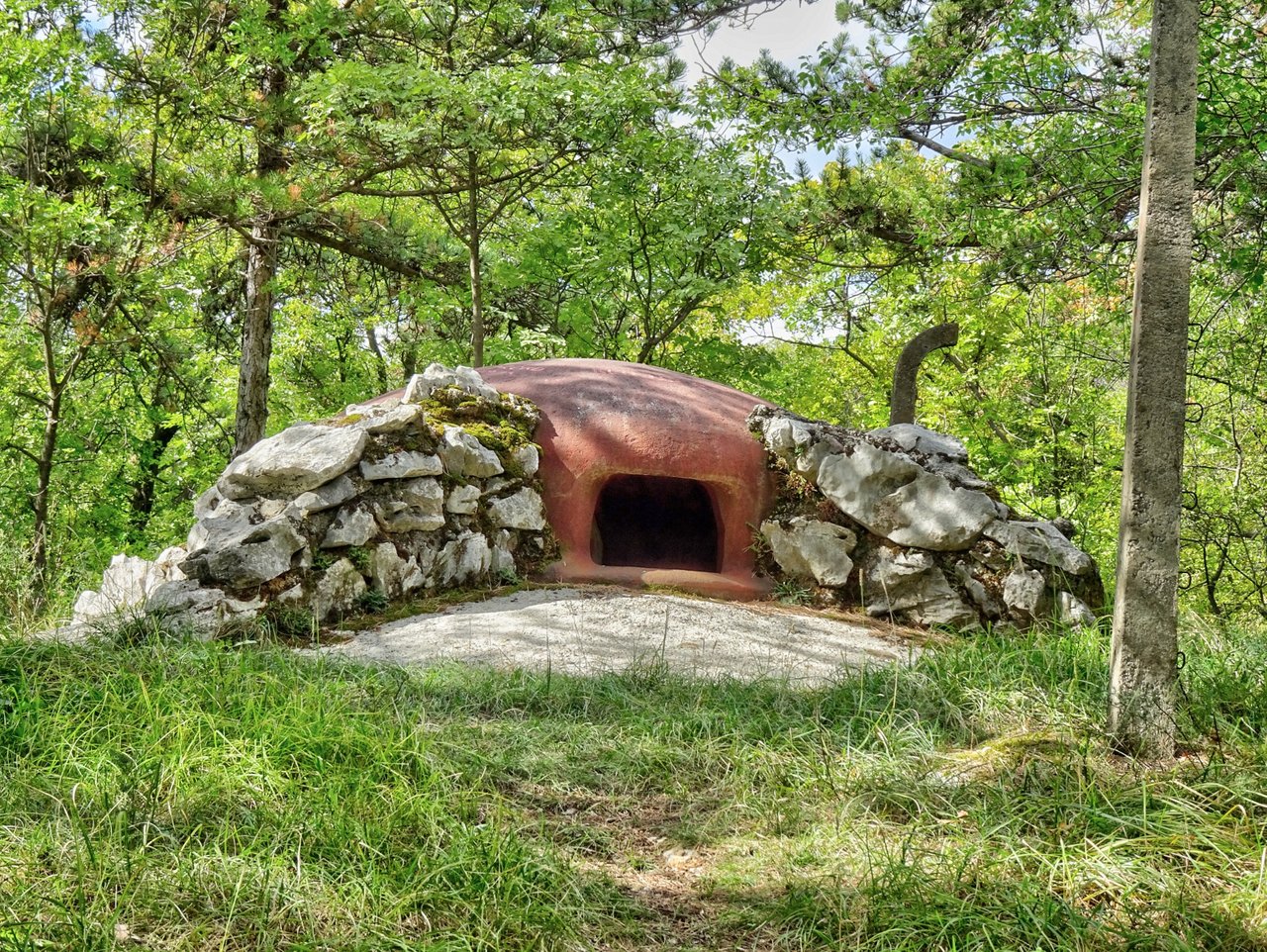 Magnificent head of a bunker
Magnificent head of a bunker
Deep is the forest, green and primed by white limestone. It goes steeply up, along goat paths, at the end of which a secret hides. Up here, not far from the coast of the Adriatic Sea and far above the Croatian port city of Rijeka, lies a secret military fortification from World War II: an underground fortress consisting of a total of 12 tunnels and bunkers for which the mountain was complete hollowed.
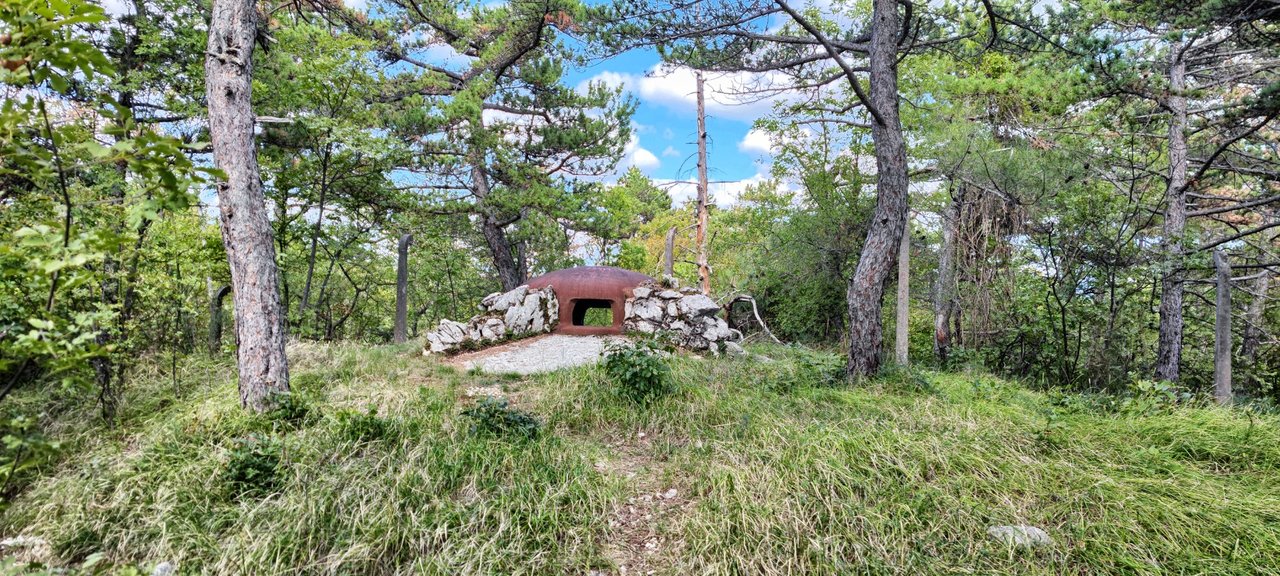 Another one, nearby
Another one, nearby
A belt of steel and conrete
It is a defensive belt of steel and concrete, built between 1931 and 1941 under the name of "Circular 200" and today it is also known as Vallo Alpino - translated as Alpine Wall. The structure is hardly noticeable to the uninitiated eye, as it extends largely underground.
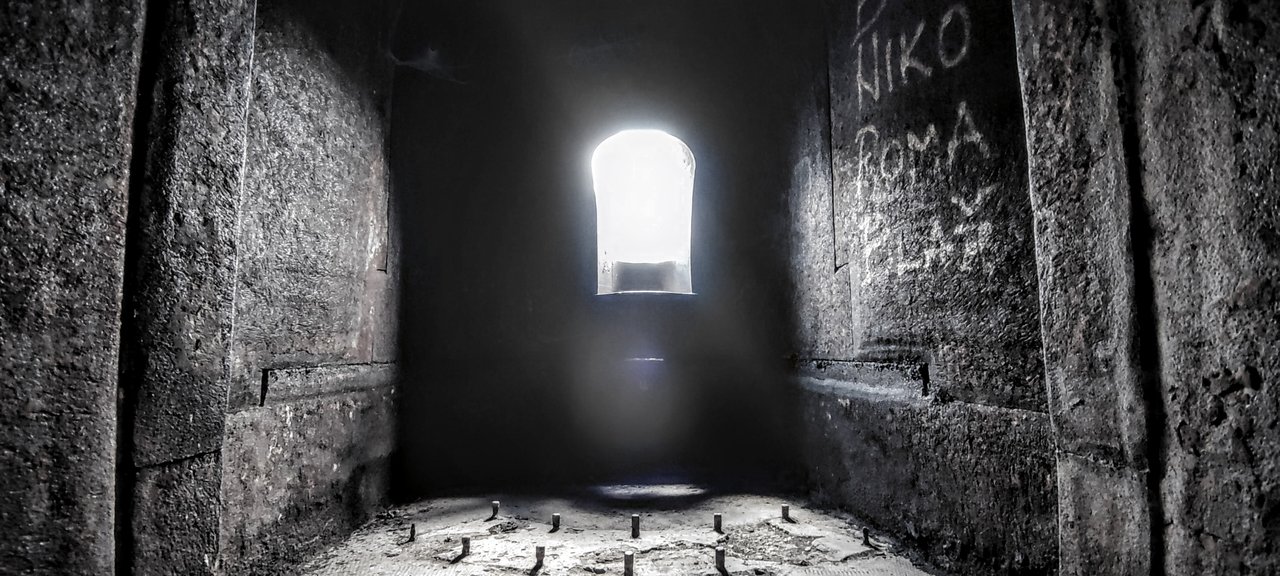 It's bright outside
It's bright outside
A few buildings, now the headquarters of a motorcycle club of Croatian war veterans, can be seen. A few walls, loopholes and remains of rusty barbed wire fence, that's all. The Katarina B fortress, which consists of two emplacements, can be seen only by those who look for it carefully.
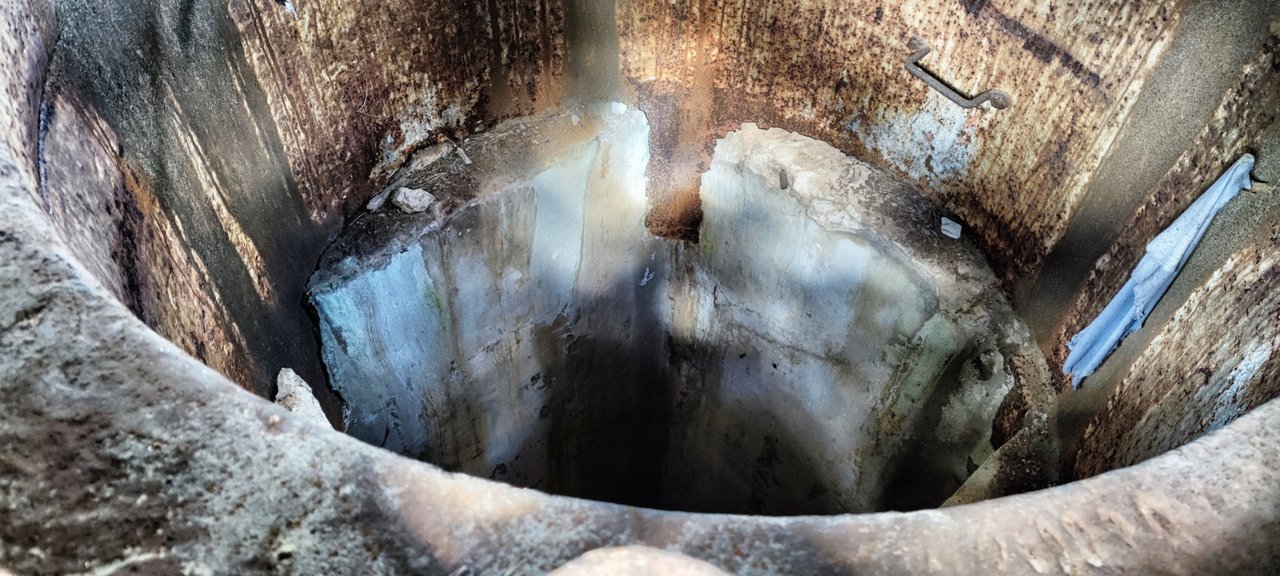 Are you brave enough to dive in?
Are you brave enough to dive in?
It takes courage to explore the cellars that reach deep into the mountain, connecting the two sectors so that together they form a ring without having to return to the same corridor.

Due to the typology of the building, fortifications of this type were built in the strictest secrecy and were inaccessible to the local population. Apart from being physically inaccessible, the massive above-ground structures were very cleverly camouflaged and therefore almost impossible to locate.
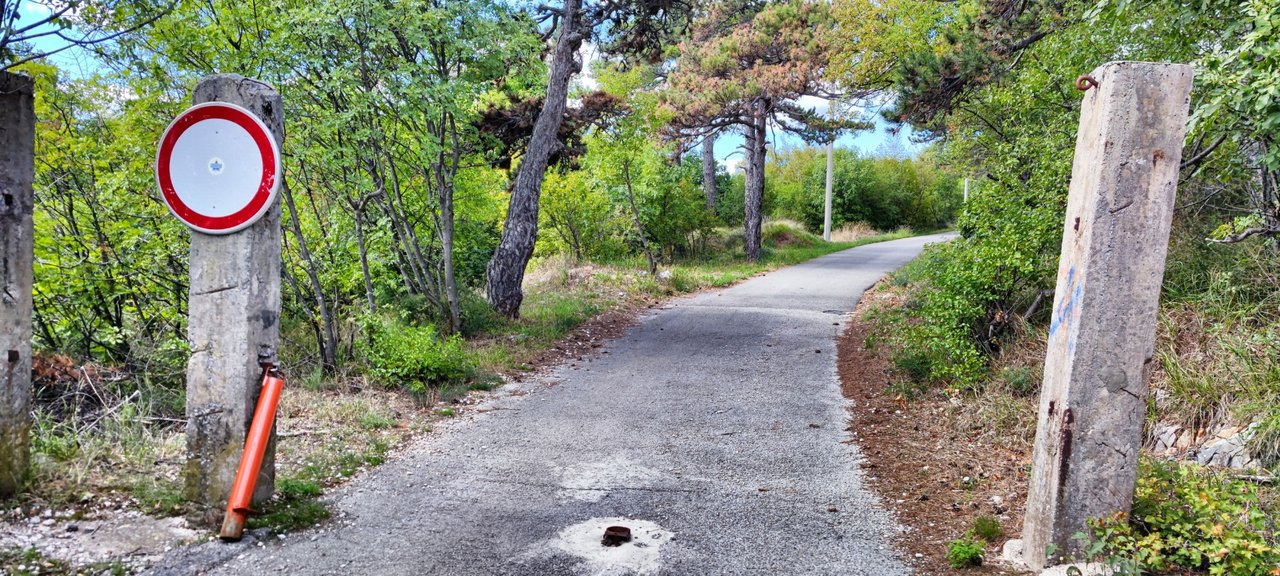 Behind the fence, thats not exist the fortress waits for you
Behind the fence, thats not exist the fortress waits for you
A tiny door into the abyss
Today, a tiny access port stands open, through which a gun was probably once aimed. Inside, it's amazing how well everything is preserved. Graffiti testify to earlier visitors, there are also remnants of parties to be seen. But apart from that, the fortress is like new. Most impressive are the steel domes on the surface. The steel elements are rusted, but still strong and fortified. How much care was taken to the construction itself is also shown by the detail of a concrete staircase with a rounded front part of the step, characteristic of civic architecture.
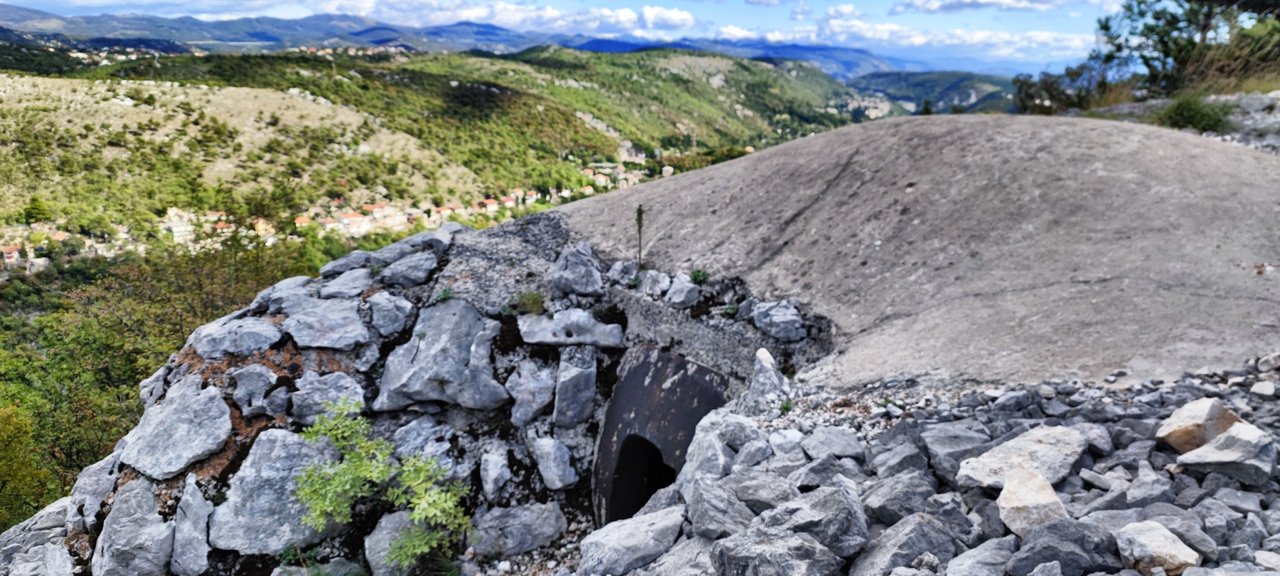 The vew from the hill the soldiers have had
The vew from the hill the soldiers have had
The length of the main circular tunnel connecting the fortifications of the left and right sectors is about 360 meters, and the total length of all corridors leading to the bunker is 790 meters. That is as long as eight soccer fields! At the bottom of the rock there are stores for food u nd ammunition, but also crew quarters, which would have been necessary for a longer stay in underground fortifications in case of siege.
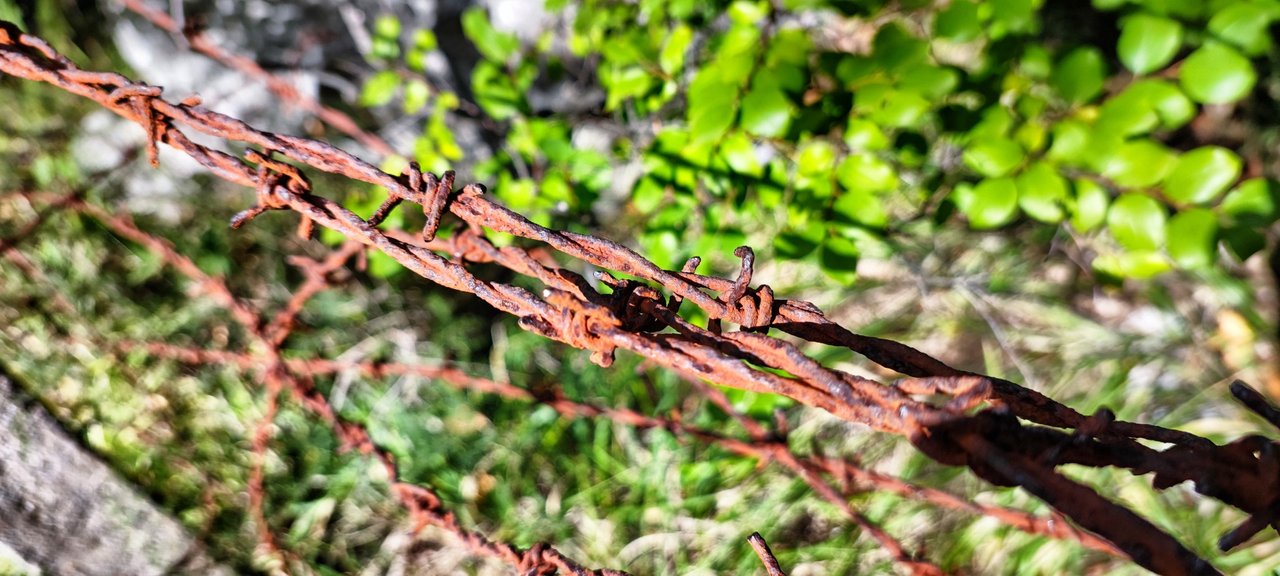 Very old barbered wire
Very old barbered wire
Defended by machine guns
Each of the fortifications had a separate entrance and a well-equipped logistical section with power generators for lighting, ventilation and communications. The generator room was located near the entrance along with the gasoline tank. The layout was adapted to the morphology of the hill where the fortifications were located, there was even a telephone for communication between fortifications "A" and "B" and a security exit defended by a light machine gun.
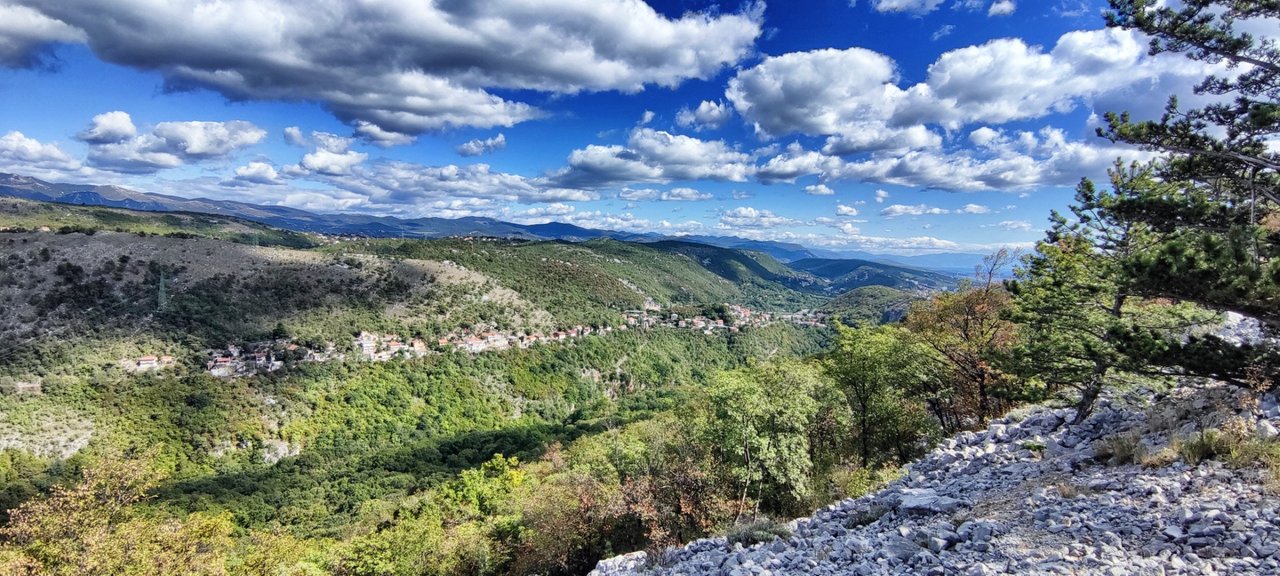 On the other side was the Kingdom of Serbia
On the other side was the Kingdom of Serbia
But why would anyone build such an elaborate facility here? Far and wide there are neither borders nor enemies. Well, after the First World War, a border between Italy and the Kingdom of Serbs, Croats and Slovenes ran through the city of Rijeka, dividing the city into two parts. The western part, which included Rijeka with its port, belonged to the Kingdom of Italy. The eastern part with Sušak and the river Rječina, on the other hand, was Serbian.
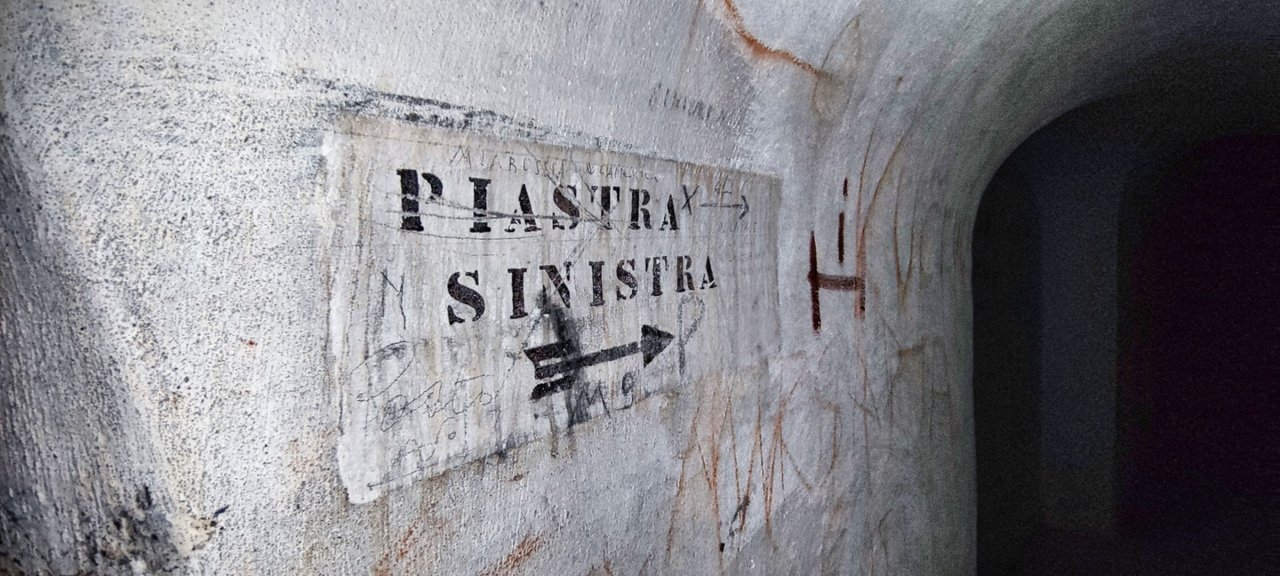 14 meters deep under the surface: The "Dark Place"
14 meters deep under the surface: The "Dark Place"
"Believe - Obey - Fight"
The part of the border that crossed the hills above the Rječina River was considered vulnerable to attack. That is why the main defense corps was camped here behind the Alpine wall. To this day, the inscription "Credere-Obbedire - Combattere", which means "Believe - Obey - Fight", and the "Di qui non passeranno", which means "They must not pass through here", still stand here.
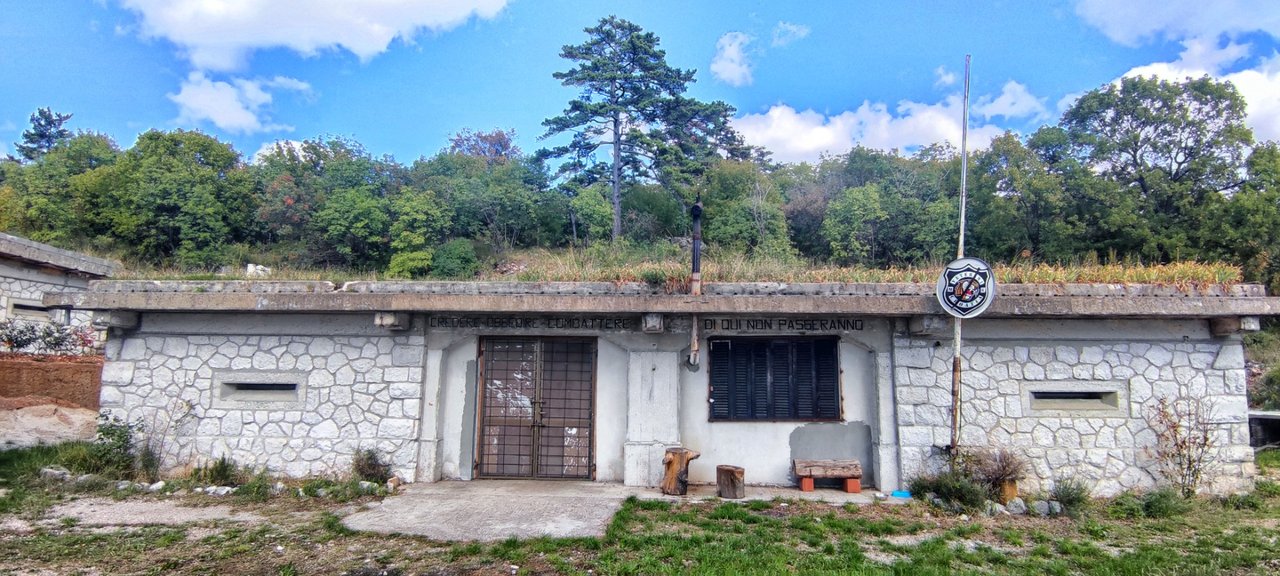 The headquarter of the motor gang
The headquarter of the motor gang
"In the climate of mistrust that prevailed in European countries in the 1930s, memories of the massacres of the First World War were still fresh. The fighting on the Italian-Austrian-Hungarian front, on the Soča River and in the Julian Alps could be compared to the ferocity and scale of the tragedy that killed hundreds of thousands of people on the plains of France and Belgium," explains a local expert. After World War I, he says, there was a belief among military strategists that it was better to invest in strong defensive lines and concrete fortifications than to rely on masses of soldiers as "cannon fodder" for the next battle.
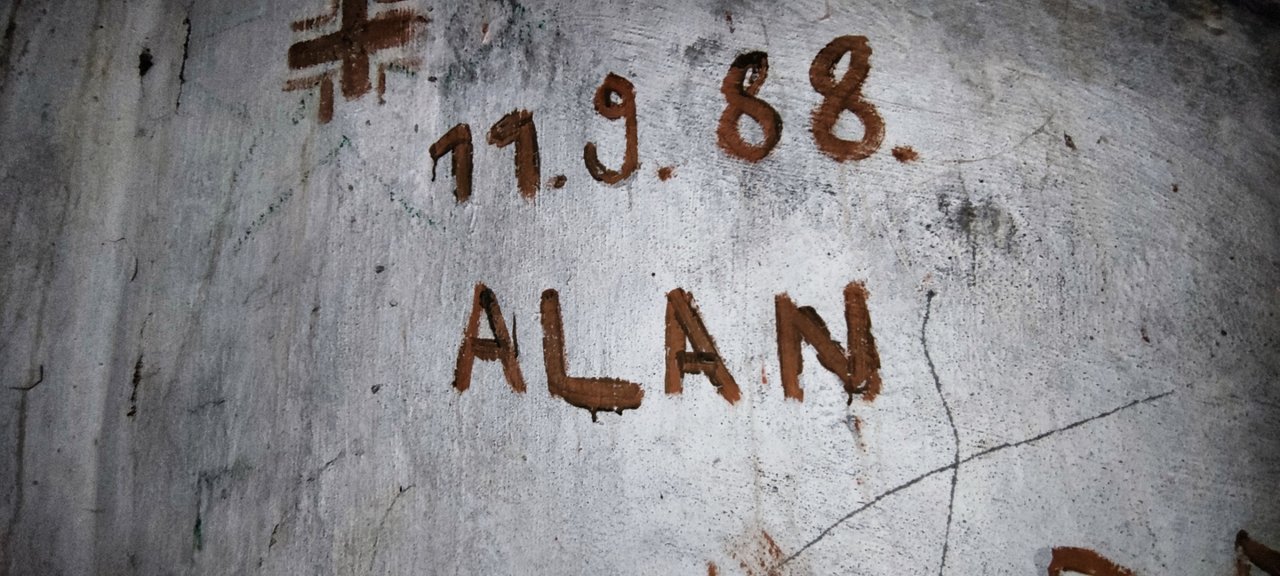 35 years ago Alan was here
35 years ago Alan was here
For the next battle
The construction of permanent fortifications on Italy's eastern border therefore began shortly after the war. Both Croatian and Slovenian newspapers of the time mention the digging of huge caves in 1931 and 1932 by a special corps of the Italian army called "Guardia alla Frontiera" (Border Guard). For decades, Italy having long since moved much further west, the fortress remained in the hands of the military, now the Yugoslavian one. It was not until 1995 that the army withdrew - after the entire complex had been involved in combat only once: from mid-April to the beginning of May 1945 in the "Battle of Rijeka," in which Yugoslav soldiers succeeded in liberating the city from German occupation.
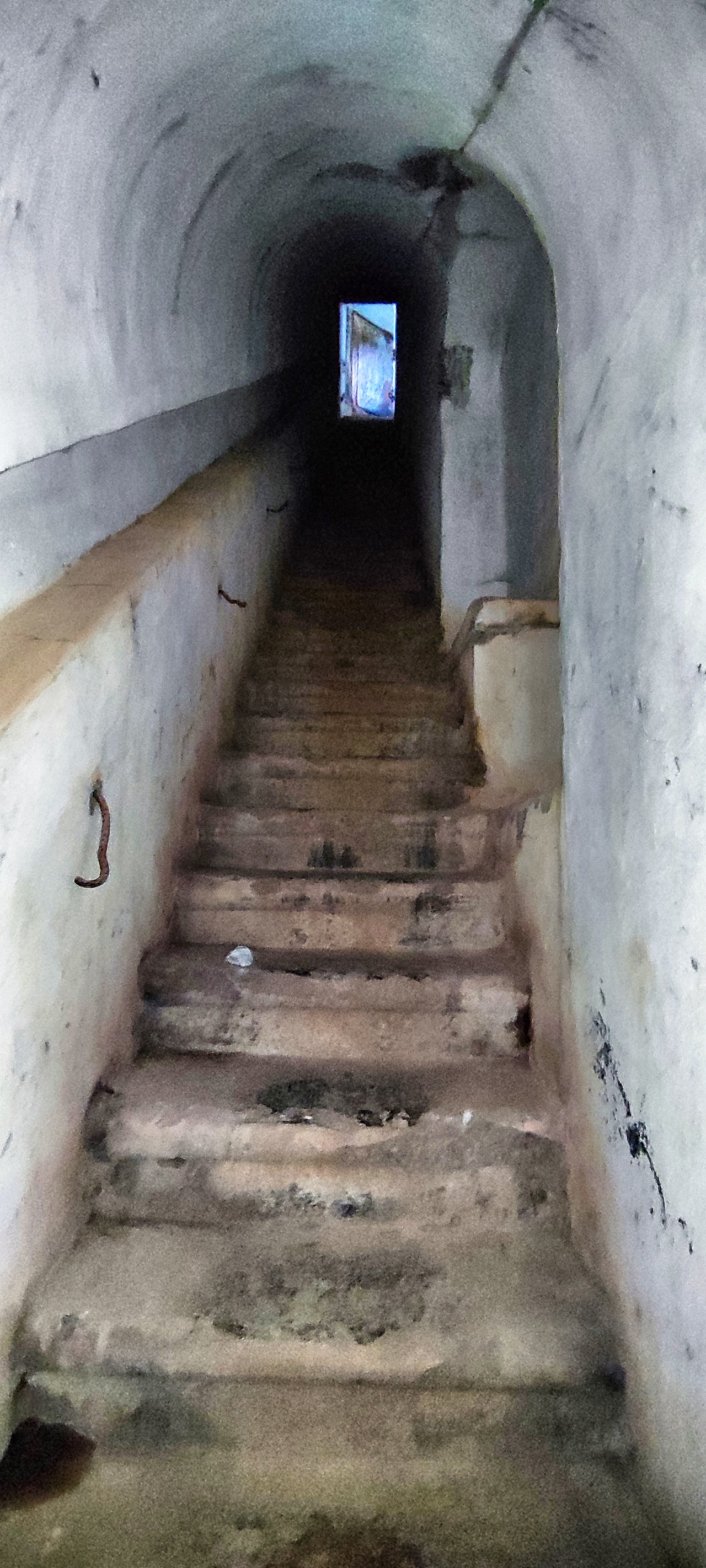 The way up, back to the light
The way up, back to the light
Today, much can be learned here about the nature and strategy of warfare in World War II. The challenging location on the slopes of the Rječina River gorge alone makes the complex a unique example of 20th century fortress construction from a structural perspective. It is fascinating that the above-ground steel domes, some 20-30 cm thick, weighed tens of tons each - it all had to be brought up here! "Katarina B" is a place that leaves you stunned and quite still. So much money and work wasted to deprive people of the view over the whole city and its surroundings for decades, because of course no normal person was allowed up here for all those decades.
Today it is possible again: the former strategic point can be reached via a very good driveway. Only from the parking lot it is still a tight march up, across the forest. And you have to keep your eyes open if you don't want to miss your destination.
Thank you for reading and if you like my work please follow me on Hive, Travelfeed or Steem or visit my homepage koenau.de
A few more pictures:
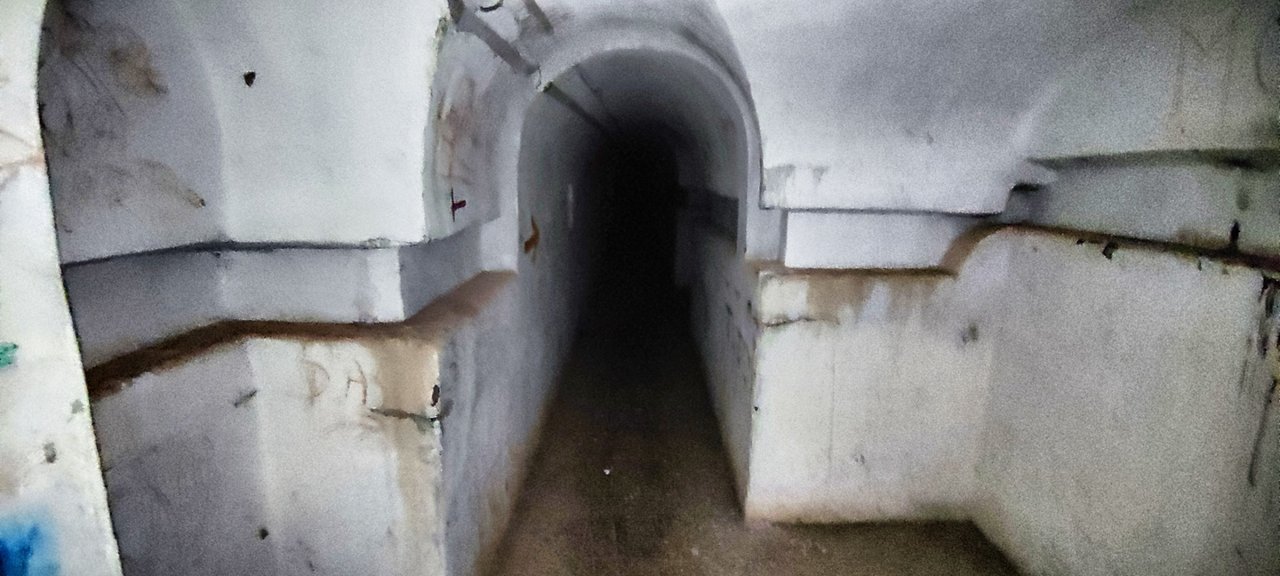 If you are brave you can take this way and walk the complete ring - nearly 800 meters
If you are brave you can take this way and walk the complete ring - nearly 800 meters
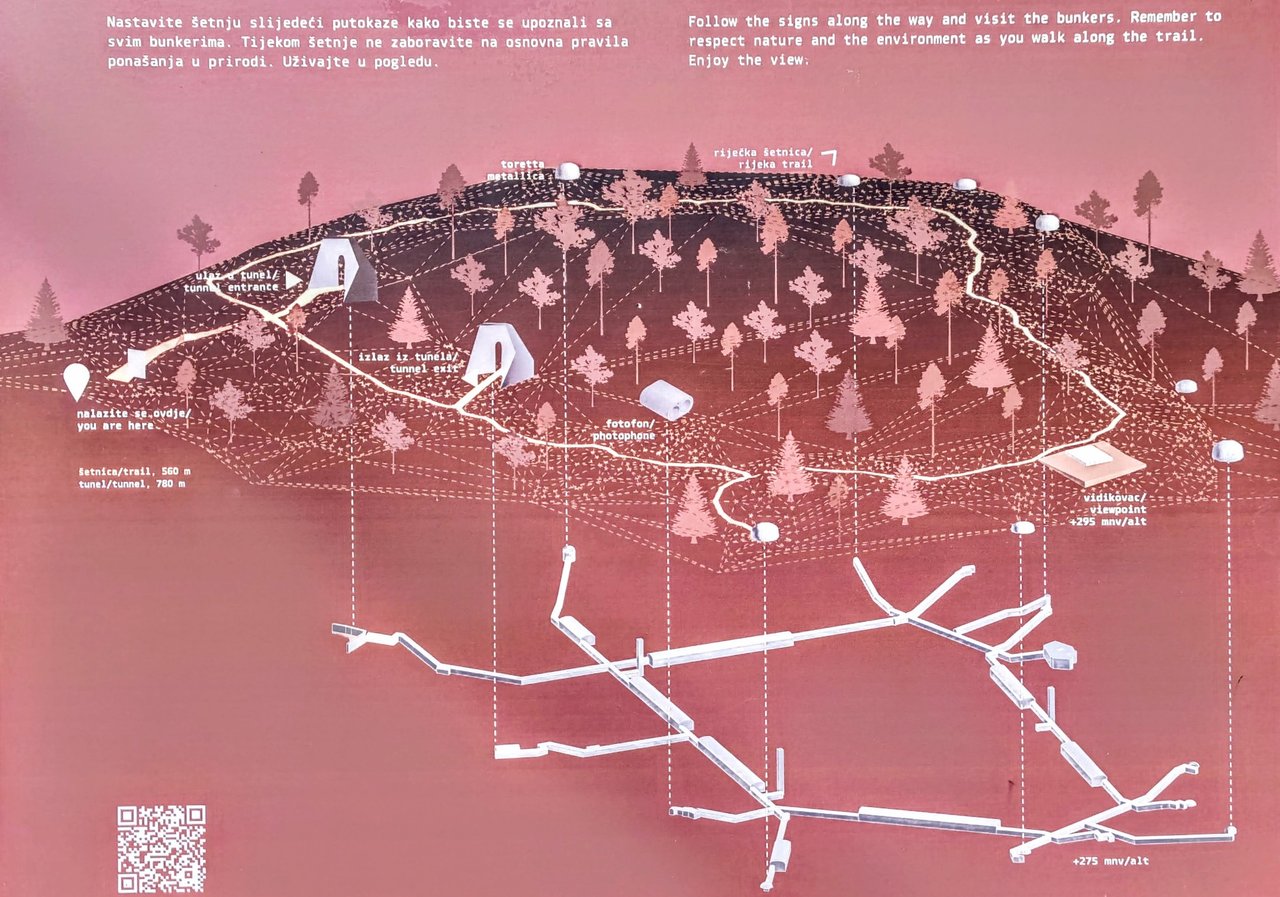 The is the map of the secret
The is the map of the secret
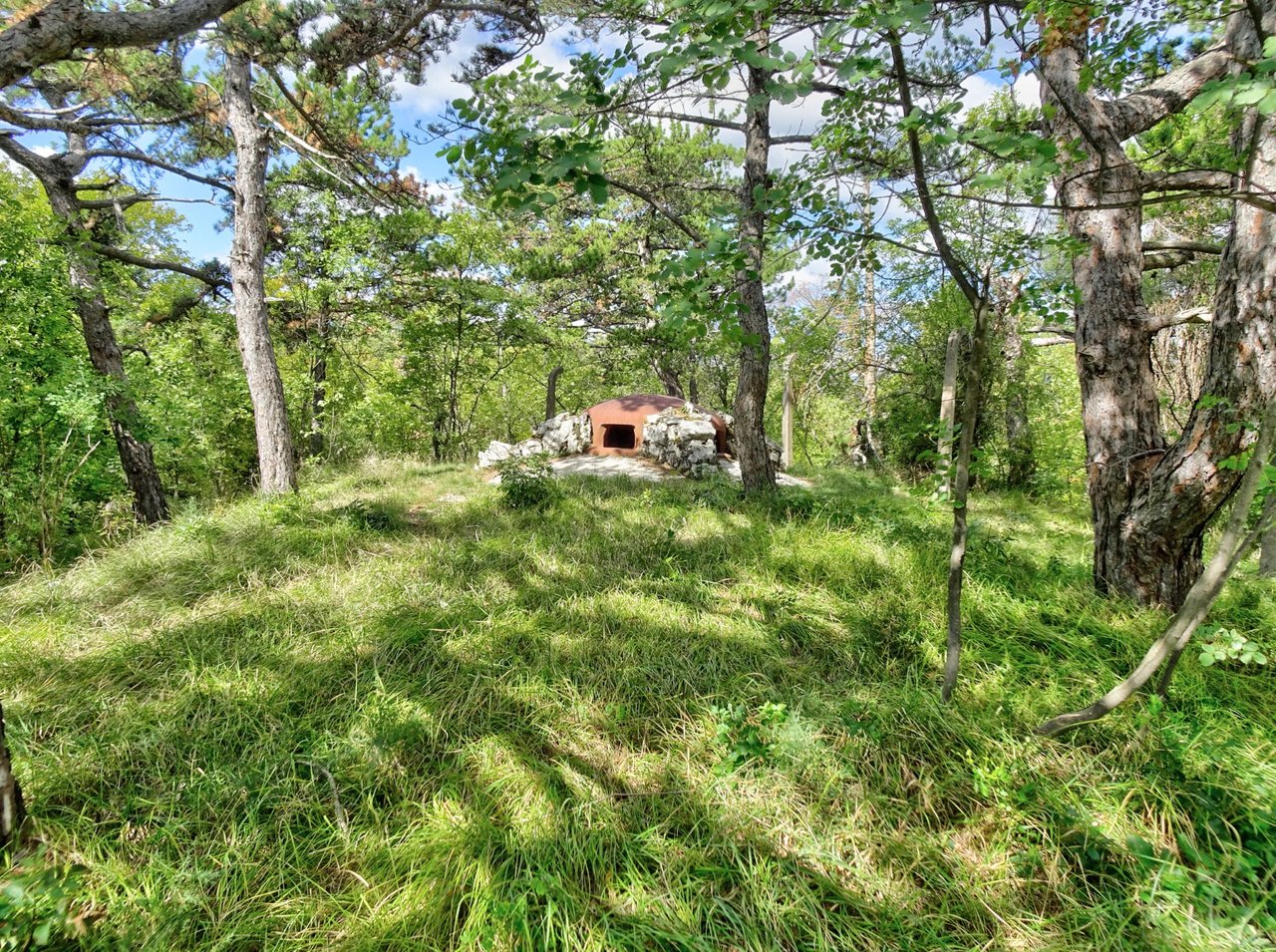
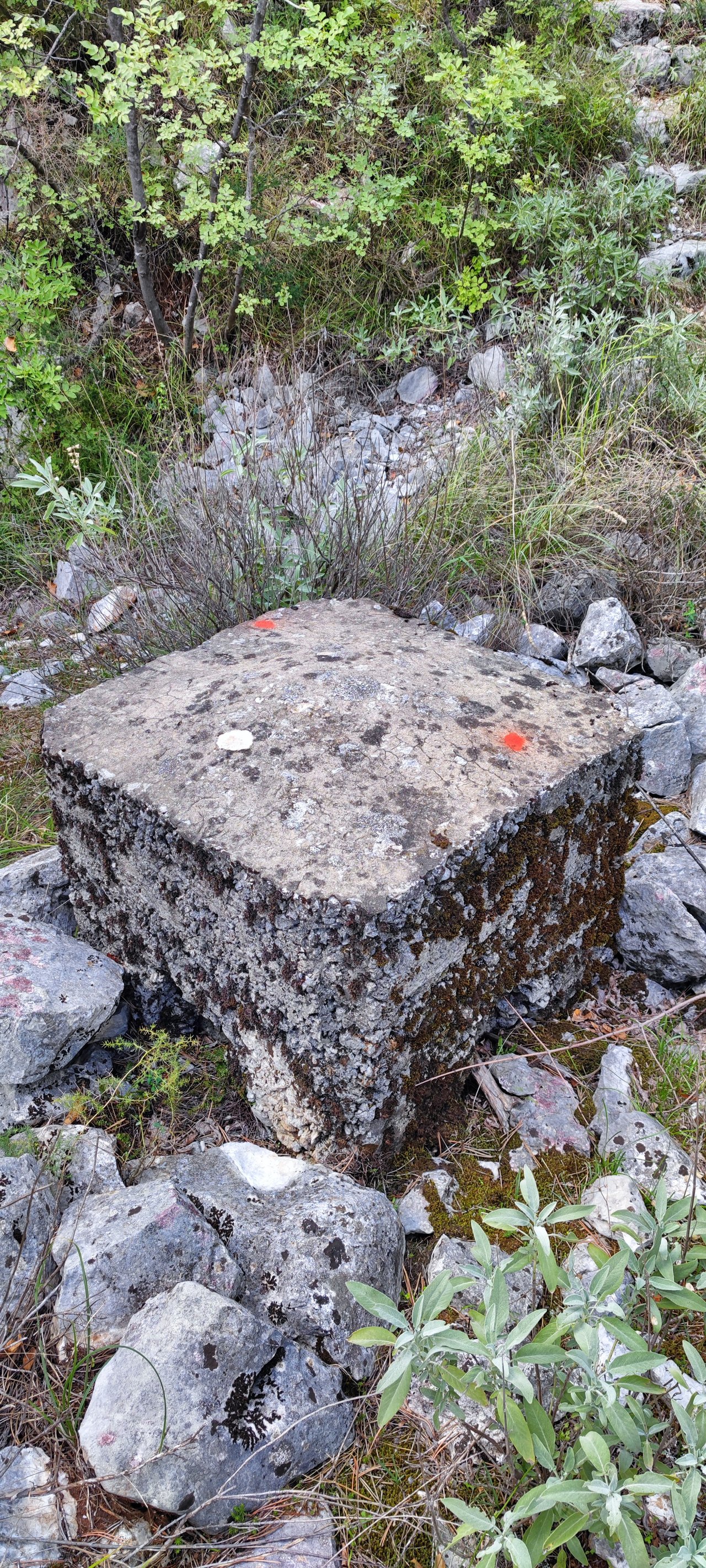 Old concrete blocks where one machine guns stood
Old concrete blocks where one machine guns stood
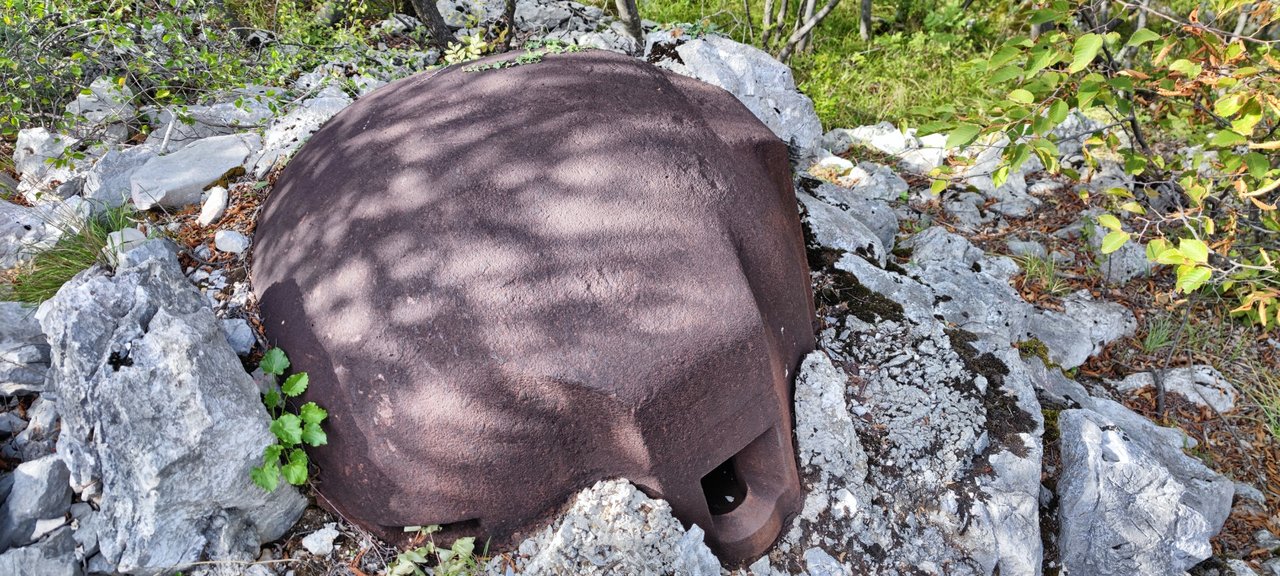 Looks like the head of an iron knight
Looks like the head of an iron knight
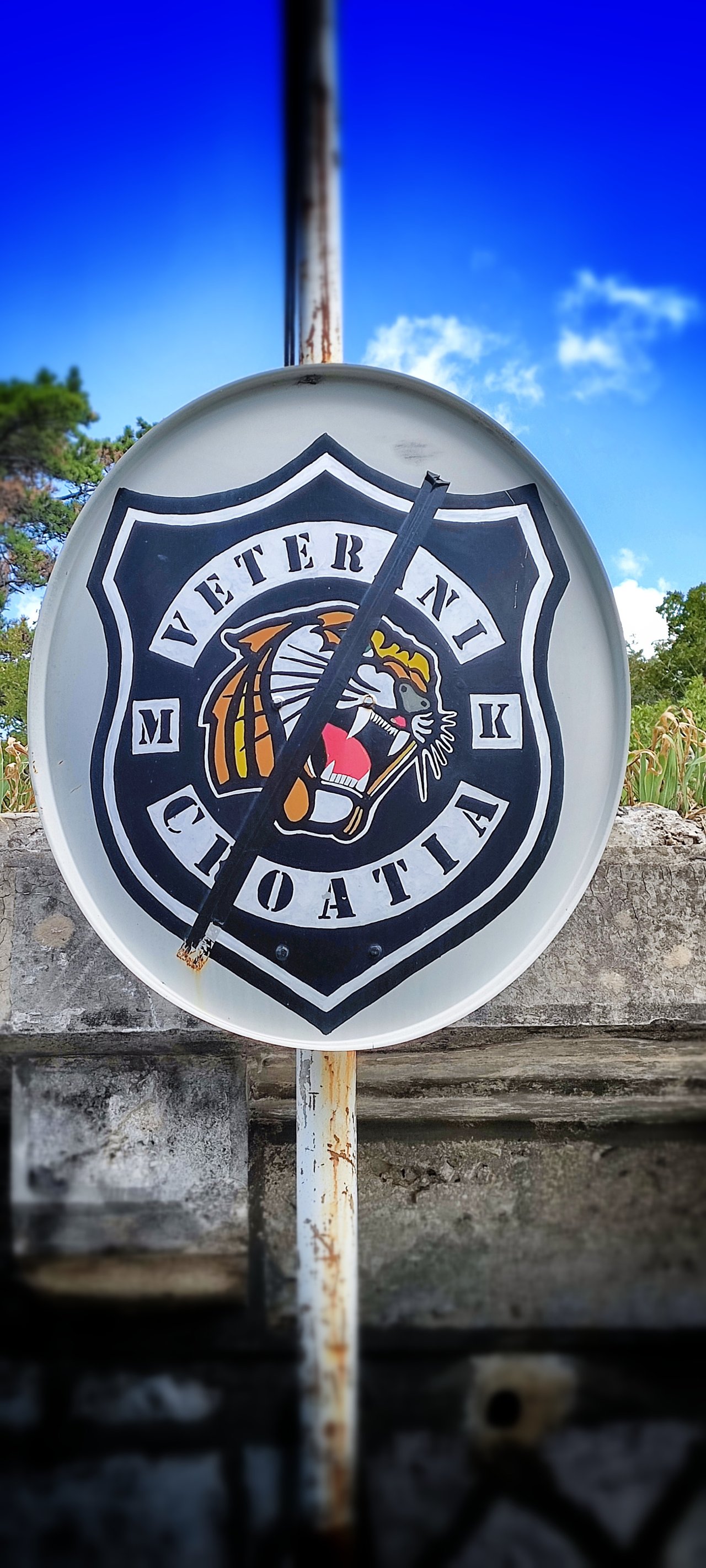 The signs of the owner.
The signs of the owner.
